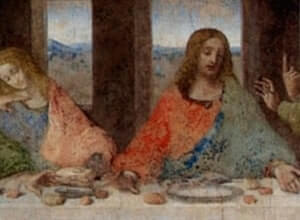Santa Maria delle Grazie
The church of Santa Maria delle Grazie is a basilica and sanctuary located in Milan, belonging to the Dominican Order and belonging to the parish of San Vittore al Corpo. The architecture of the tribune, built between 1462 and 1463 at the behest of the Duke of Milan Ludovico il Moro as a mausoleum for his family di lui, is one of the best-known achievements of the Renaissance in Lombardy.
It was the second Italian site after the rock carvings in Val Camonica to be classified as a World Heritage Site by UNESCO, together with the fresco of the Last Supper by Leonardo da Vinci which is located in the refectory of the convent (owned by the Municipality of Milan).
The foundation of a second group of Dominican friars in Milan dates back to 1459, in addition to the first, ancient settlement of Sant'Eustorgio dating back to 1227, only eleven years after the foundation of the order.
The congregation of Dominicans, who settled in today's church of San Vittore al Corpo, received a piece of land as a gift in 1460 from Count Gaspare Vimercati, a commander in the service of the Sforza. On this land there was a small chapel dedicated to Santa Maria delle Grazie, and a courtyard building for the use of the Vimercati troops. On 10 September 1463 the first stone of the convent complex was laid. The construction began from what is now the Cloister of the Dead, adjacent to the primitive chapel of the Virgin of the Graces, which today corresponds to the last chapel in the left aisle of the church. Guiniforte Solari, the most prominent architect in those years in Milan, former chief engineer of the factory of the Duomo, of the Ospedale Maggiore and of the Certosa di Pavia, was called to direct the work. Thanks to the patronage of Vimercati, the convent was completed in 1469, as told by the Dominican Father Gattico, whose story is precious for reconstructing the building phases of the complex
The Solarian convent was articulated around three cloisters. The original cloister housing the Vimercati troops which was incorporated into the building; the Great Cloister, overlooked by the cells of the friars, and the Cloister of the Dead adjacent to the church. Today it is possible to see the post-war reconstruction of the latter, as it was entirely destroyed by the bombings of 1943. It consists, to the north, of the north side of the church, while on the other three sides runs a portico of columns in serizzo with Gothic capitals. with smooth leaves. On the portico, to the east, the ancient Cappella delle Grazie, the Chapter and Locutorio rooms overlook and to the north the library, built by Solari on the model of the already famous Library of the Dominican convent of San Marco in Florence, designed by Michelozzo twenty years earlier [2]. The south side is instead entirely occupied by the refectory, containing the famous Last Supper.
The interior of the church is clearly Gothic in style. The naves, built by Solari, were initially in dim light, then later they were illuminated by Bramante, who added a tribune at the intersection of the arms.
The characteristics of Santa Maria delle Grazie are typical of the late Lombard Gothic, using brick, granite, pointed arches, ribbed cross vaults, three-nave plans with side chapels and a “hut” facade.
What does think the people who bought tickets with us
Everything Ok!
Sara M.
Great customer service. Everything was perfect!Cenacolo.it thanks for the excellent service and fast. We are very satisfied.
Michele V.Choose your tour was a most great choice: accuracy, punctuality, good guide. Very good experience.
Patrizio P.I finally managed to visit the Last Supper. Thank you!!
Yana V.
Why buy tickets on cenacolo.it?
Skip the line
The unobtainable tickets to visit the Last Supper.
Voucher on smartphone
You can use the voucher from your smartphone.
Audio guides and video guides
Book your audio guide together with your tickets
Safe shopping
All transactions take place on super secure secure gateways.



